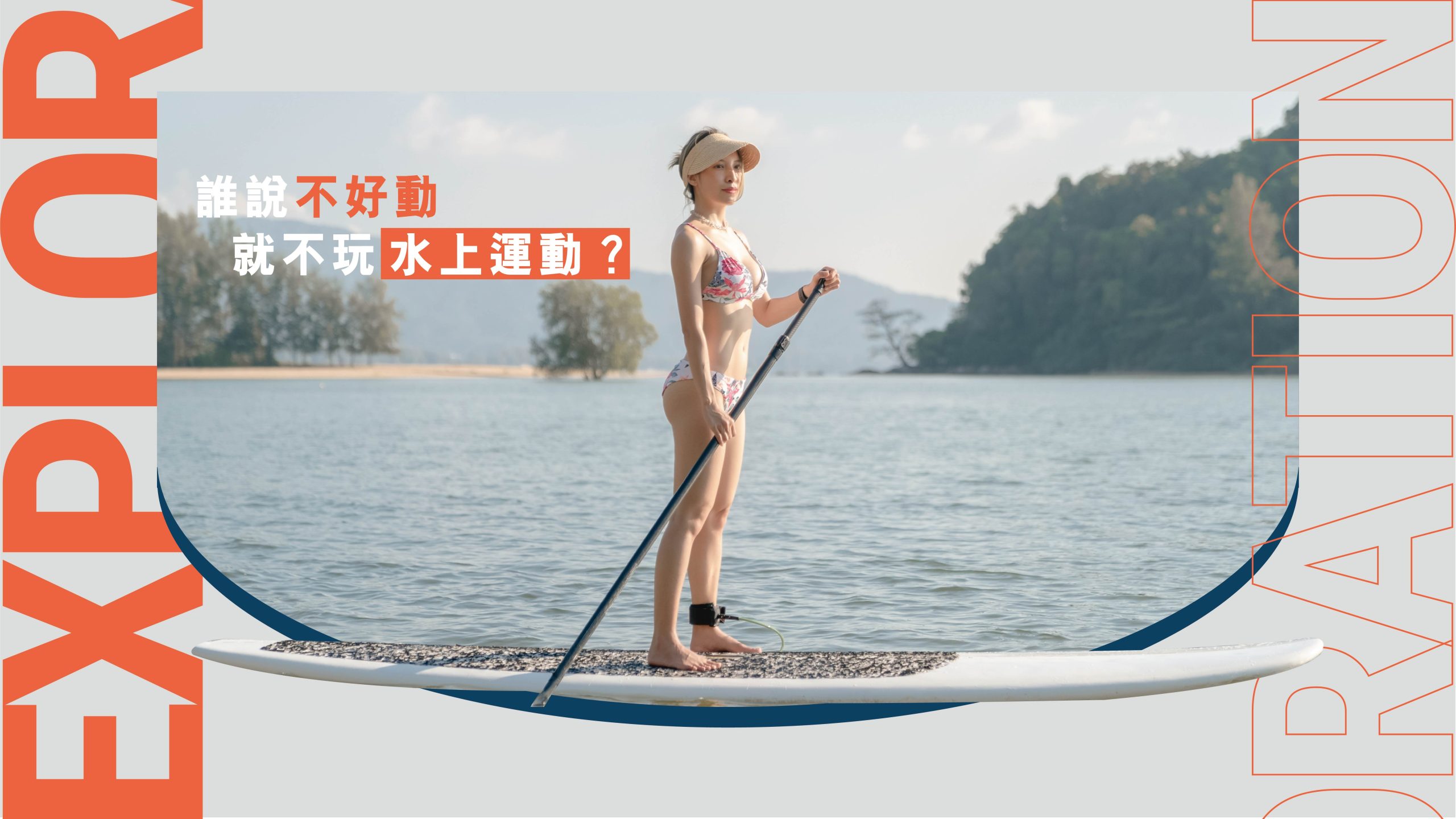
Girls who enjoy water sports are often associated with traits like being active, sunny, lively, athletic, and skilled swimmers. Have you ever felt influenced by these stereotypes, especially if you’re not someone who typically engages in outdoor activities? Perhaps you’ve been invited to a water activity party by friends, but lacked the confidence to participate or assumed it wasn’t for you without trying it out?
As an editor, I have many friends who don’t consider themselves strong swimmers and often view water sports as something that involves a lot of falling and potential danger. However, they still love the ocean and enjoy watching it from the shore. The truth is, there are relatively calm and peaceful water sports options that allow you to enjoy the therapeutic power of the ocean during the hot summer months.
If you’re not a fan of intense water sports, you can try SUP (Stand Up Paddling), which has become increasingly popular in Hong Kong in recent years and is especially loved by girls! It’s a great way for less athletic and more water-shy girls to interact with the ocean and get closer to it by starting with a stand-up board.
SUP: The Fun and Effective Workout You Didn’t Know You Were Doing
A stand-up paddleboard (SUP) is comprised of three elements: the board, paddle, and leash. There are two types of SUPs: hard boards and inflatable boards, each with its own advantages and disadvantages. Inflatable boards are made of rubber, making them easy to transport, but they can be prone to air leaks. Hard boards, on the other hand, are typically made of fiber materials, making them heavier than inflatable boards but more stable and less likely to capsize. However, in Hong Kong, most people prefer renting SUPs due to their large size and seasonal nature, and renting is a convenient option.
For beginners, it’s important to understand that the pointed end of the board is the front. The basic SUP positions are kneeling, standing, and prone. Beginners typically start by kneeling on the board with their feet, which lowers the center of gravity and makes it easier to maintain balance. They can also control the direction of the board with their hands. Once they’ve gained balance, they can gradually stand up.
Although SUP may seem simple, it requires training the body’s core muscles and endurance. For example, leg muscles are used to maintain balance, while upper body muscles are used for paddling, which can train the shoulder, arm, and back muscles.
Compared to other water sports, stand-up paddleboarding has relatively simple and easy-to-learn techniques, and the pace is relatively slow, making it an activity that provides a workout without you even realizing it. I find this feeling of “keeping fit without even realizing it” quite appealing!
Exploring the Diverse and Varied Ways to Play Stand-Up Paddleboarding
Despite its seemingly simple equipment, stand-up paddleboarding offers a wide variety of ways to play. During peak season, various organizations also offer different stand-up paddleboarding activities, such as “SUP Eco-Tours,” “SUP Yoga,” “SUP Water Polo,” “SUP Beach Cleanups,” and more, which cater to people with different personalities and interests.
In addition to meaningful environmental conservation activities, eco-tours can be a great option. By using stand-up paddleboards, you can get up close to the “mangroves” that are difficult to access on foot or observe other coastal ecosystems.
Another activity that is gaining popularity, particularly among women, is “SUP Yoga.” One type of SUP Yoga is “Yin Yoga,” which is suitable for beginners or those with less experience. Yin Yoga utilizes fewer muscles and is not as physically demanding. By focusing on maintaining stillness, breathing, and concentration, you can increase your flexibility and relax your nervous system, ultimately improving your overall athletic performance.
The benefit of practicing stand-up paddleboarding on the water is that it allows you to step out of the indoor space or gym and connect with nature, invigorating your body and improving your physical and mental well-being.

The ocean is a wonderful place for meditation and relaxation. The sound of waves and the flow of water can help soothe the mind and body, allowing you to adjust to your own pace. In fact, if given the choice, I would definitely prefer practicing yoga on the ocean rather than in the city. The rhythm of the waves and the natural breeze are more therapeutic and can help alleviate the stresses and worries of daily life.
“Wet Play and Leisure – Hong Kong Mobile Professional SUP Instruction” (IG@tourvanism) also offers SUP racing and SUP boxing, expanding the possibilities for stand-up paddleboarding and creating even more fresh ways to enjoy the sport!
Starting Your Water Sports Journey with Stand-Up Paddleboarding, Even with Zero Experience
If you think water sports are too difficult, dangerous, or thrilling, but you love the ocean. It’s time to let go of those excuses. Not every water sport requires you to be “adventurous” to enjoy it. If you prefer calm, slower-paced activities, there are still plenty of water sports for you to try. Don’t limit yourself based on preconceived notions.
Trying something new can lead to unexpected experiences. Join your friends and learn stand-up paddleboarding, step away from the shore, and get up close with the ocean.
Source:shop.outletexpress、IG@tourvanism

